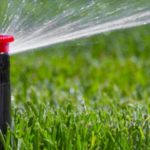Wind energy is one of the fast-growing and most sustainable sources of energy in the world. It comes with a lot of benefits such as cost-effectiveness, sustainability, creates a lot of job opportunities, it is a clean source of energy, can be set up on existing ranches, helps the economy as a whole.
That said there are some challenges in setting up wind turbines too. Some of the major challenges faced are that it cannot compete with our conventional source of energy which is coal, it can be set up only in rural areas certainly far away from cities, uses up a lot of lands and it may not that profitable for landowners, and it can have some adverse effect on the wildlife. All these mentioned, they still trump the benefits of the wind-powered farms when you think futuristically. Here are the steps on how to create wind-powered farms:
- Plan the location of the wind farm: Building up a wind-powered farm is a colossal task and requires a lot of efforts right from planning to execution. The first and foremost thing to do is plan the location because it has to authorised by the government, wind resources should be ample, and should not pose any threat to the wildlife. There are wind maps that can help you identify the location and weather to some extent. Besides you also should consider other factors while choosing a location like road accessibility, impact due to noise, aesthetic pollution, and the blades flickering.
- Assess the wildlife risk factors: Setting up windmills do come out as a threat to birds especially the endangered species. So it is always a good idea to set up windmills far away from wildlife. Appoint a site developer who is authorised to do your windmill set up planning so that he can work in accordance with the government regulations. You can also install windmills in urban places provided it does not threaten the life of birds or animals. One other thing you can do is pause these windmills during the season of migration of birds and during the low-wind season, etc.
- Fulfil legal requirements: Firsts things first, hire a lawyer or an attorney who specialises the legalities of renewable resources. Your attorney will be able to help you obtain the necessary permissions for building and environmental issues, etc.
- Plan your finances: Decide on how big or small you want your plant to be. This can be decided based on how much energy you want to produce and how much money you can spend on this plant. As you know, wind turbines are exorbitantly priced and can definitely burn a hole in your pockets. So take steps accordingly. Governments do help businesses to set up wind turbines, so talk to your banker.
- Plan power transmission: Once you decide to produce wind energy you will definitely want to transmit it to the users. Ideally, it requires wires that can the output from your farm to the main electric grid if yours is a big plant. If your farm is small scale, you will need to link the output to just your business or your community as required.
- Run and test: It will take several months to build a full-fledged wind farm. Construct roads to transport the turbines to the facility, excavate hole on the ground to fix the turbines, set up the wiring as required. Now test the entire set up to make sure everything is working fine and then you are good to go.


